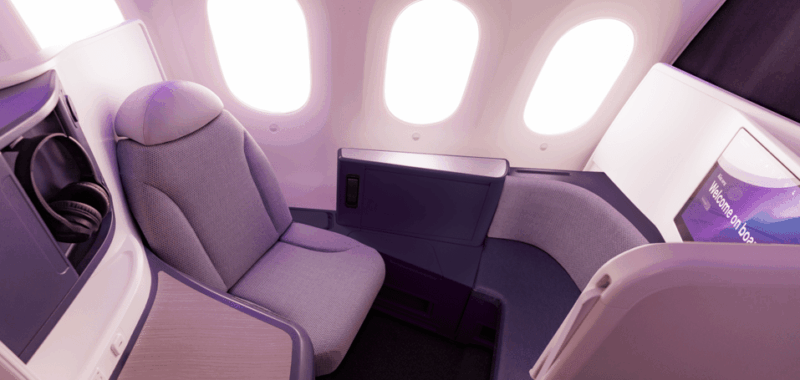Business class remains where most full-service carriers make most of their money. As a result, airlines have long sought to maximize revenue by offering a product that keeps their most lucrative (and often most informed) customers from moving to a rival with a better seat.
On twin-aisle widebody aircraft, direct aisle access for every passenger is critical for any serious international airline choosing new seats.
Airlines are now in the position where a seatmaker’s ability to squeeze an extra two seats compared with their nearest competitor is a dealmaker — or dealbreaker.
The challenge for seatmakers starts with aircraft shape: Each widebody has slightly different dimensions. While the cabin floor appears fairly rectangular in 2D, curved sidewalls and fuselage tapering turn it into a complex 3D puzzle.
To make the most of these 3D shapes, seatmakers are doubling down on their focus to optimize seats for specific aircraft cabins.
Constraints such as the position of the seat track supports, the point at which the fuselage tapers at the front of the cabin, and the position of lavatories and galleys must all be considered.
The most immediately visible of these is the customized version of Recaro’s R7 seat for the Airbus A330. Its core market focuses on retrofitted A330ceo aircraft and new-build A330neos.
Here, Recaro is bumping out the curve of the window-adjacent seat and footwell significantly. The company is also straightening what was a lightly angled stagger to better optimize the A330’s narrower fuselage.
Optimization, But at a Cost
Less visible but no less impressive is Thompson Aero Seating’s updated A350 and 787 version of its Vantage XL seat, the original version of which is seen at Australian flag carrier Qantas and many other operators.
Rather confusingly, it is called the Vantage XL+, a name it previously used for the doored suite version of the XL product.
Here, the Vantage XL product was previously optimized for the narrower A330, and with the new version Thompson is adapting the center section with a larger footwell and more knee space. This is enabled by the extra inches it has to work with on the wider A350 and 787 fuselages.
There is, of course, a cost to all of this optimization: both literal in terms of seat development, but also in terms of a reduction in parts commonality.
There is also an increase in production, certification, maintenance, and parts supply chain costs. But it seems that, for a growing number of airlines and their seatmakers, the result is worth it.
Read more of John Walton’s passenger experience insights for Skift here.
Airlines Sector Stock Index Performance Year-to-Date
What am I looking at? The performance of airline sector stocks within the ST200. The index includes companies publicly traded across global markets including network carriers, low-cost carriers, and other related companies.
The Skift Travel 200 (ST200) combines the financial performance of nearly 200 travel companies worth more than a trillion dollars into a single number. See more airlines sector financial performance.
Read the full methodology behind the Skift Travel 200.


